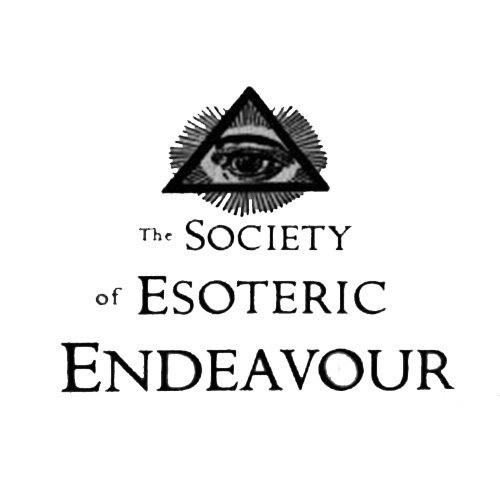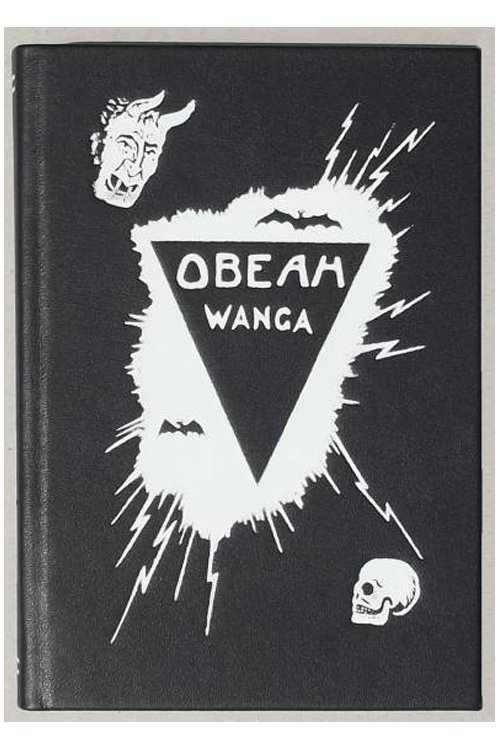The Society of Esoteric Endeavour
A publishing endeavour of Caduceus Books, producing new titles and reproducing older titles in a collectable and limited format. Given the antiquarian origins of many of the titles details on individual books can be found at the bottom of this page below the book gallery.
Website - http://www.caduceusbooks.com/publications.htm

Its secret is revealed by pulling the top right corner down and to the right. The entire book block pivots to reveal a cavity holding a book with full leather binding with blind stamped decoration surrounding the Monas Hieroglphica blocked in pure real gold.
This graphic grimoire is a manifestation of the Saturn Gnosis as taught by Michael Bertiaux who contributes an Introduction and Afterword, the latter being the record of a séance that was intended to secure the voudon passporté that secures access to the realms articulated in the book.
A Complete System of Magic provide the magical procedures that clients might seek from a Cunning Man. These include charms for healing with spells to staunch bleeding and stop cramp and heal burns. There are charms for love, to cause an errant son or daughter to return and to protect a building from evil.
This work was first published in 1895 in Trinidad and achieved instant obscurity, However, it seems that a bell was rung somewhere as 9 years later, on 8th April 1904 Aiwass instructed Crowley that, as well as the mantras and spells and the work of the wand and the sword, he should learn and teach "the obeah and the wanga"
The mystical tower is an archetype expressing human aspiration to the Divine. This book describes that archetype and some of its incarnations in actual towers of stone. Beyond this, the book - in itself - makes manifest the archetype!
The roots of the Golden Dawn are complex and have been much debated, and will be much discussed in the future as new evidence emerges. It is undisputed, though, that Major F.G.Irwin was an important player in the pre-Golden Dawn occult milieu.
The author translated 37 manuscripts books known as “Svartkonstbuchs” [ie black art book} which Scandanavfian practitioner’s of folk magic were expected to possess. This work collects together all those charms and rituals dealing with spirits of the dead and human bones, with the addition of some other relevant material.
In the work Hockley collects a number of rituals, giving some a powerful visual form, akin to a Mandala. In the final ritual, a perilous invocation of Oberion, he records the appearance of the spirit in a grotesque form reminiscent of Edvard Munch’s the Scream.
The Toadmen were a clandestine rural fraternity famed for their mysterious powers, including the control over horses. The author first learnt of their powers form his grandmother as she recounted an incident from when she was a girl.
This text first appeared as an appendix to the first edition of the Grimoire of Pope Honorius in 1670. It was reproduced with some additions in the second edition of that title in 1760, and elsewhere. Its significance has been overlooked.
It is not always realised that when Goethe wrote Faust he was drawing upon an extensive corpus of often quite folky publications concerning the famous yarn. These included grimoires attributed to Faust himself. One was published as a series of 11 lithographs of text and illustration in the middle of the 19th Century in a collection of chapbooks, fairy tales and other popular miraculous literature.
This clandestine esoteric society flourished amongst ploughmen in Scotland from the end of the 18th Century until the early 20th. Its members were believed to have supernatural control over horses, and also women and were also associated with witchcraft.
There is a long tradition of grimoires being black books, or dark. This manuscript is not part of that tradition. Thee original manuscript was bound in scarlet velvet This facsimile reprint is likewise bound in red velvet.
Sibly wrote the original manuscript c.1800, translating its core from French but also writing many additions including a preface and the talisman designs. The text is entirely different from the Key of Solomon as translated and published by McGregor Mathers.
The text is remarkable. It seems to describe a ritual that the writer carried out. Protection is sought from a demonic Trinity before Christian powers are used to evoke an infernal spirit, specially associated with the place of the working, into a piglet that is led into a magic circle where it is slain.
Provides a great deal of general information as to the magical regalia and practices of the conjurors of spirits. Some aspects seem quite modern, for instance a magic circle need only be imagined to be effective. Some of the regalia, such as snakeskin belts and so forth, is rather reminiscent of shamanism.
This is a facsimile of the manuscript belonging to F.G Irwin who was a member of Societas Rosicruciana in Anglia, The Society of Eight, the Fratres Lucis and the Golden Dawn. He was an important figure in the 19th Century British occult milieu.

















